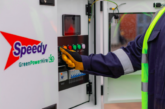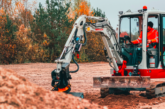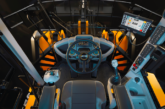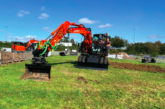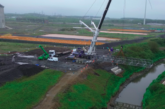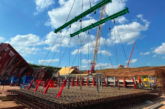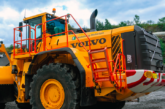
“It’s not new, it’s now.” This was the observation of one exhibitor at the recent Intermat exhibition in Paris, which CPN attended ( more of that in next month’s issue). He was referring to the ongoing electrification of machines that featured heavily across the many stands of OEMs in the industry’s bid to drive decarbonisation and sustainability.
However, when asked if demand for these alternatively powered machines was on the rise, he conceded that there was still some reticence on behalf of operators to purchase electric equipment, citing the example of the EV car market, where initially scepticism around performance and charging infrastructure had held back consumers.
Now EV car ownership is widespread, thanks in part to the many incentives handed out, to encourage purchase. This, our exhibitor believes, is the way the machine market will develop, though for incentives read legislation. The ability to work on jobs in future might well depend on terms and conditions handed down by awarding authorities that mandate the use of electric or sustainably fuelled machinery. Already countries such as Belgium and the Netherlands have imposed such conditions both on a national and regional level, but the picture elsewhere is patchy.
In the UK we are all sensitive to the need to drive decarbonisation, and as mentioned in last month’s issue referring to the government’s enquiry on whether to intervene to support NRMM decarbonisation, a strategy is needed if we are to embrace a low carbon future.
if the industry is to reduce its current emissions output, currently estimated to be 11.4 million tonnes of CO2 equivalent (MtCO2e) per year – equivalent to 2.7% of all the UK’s greenhouse gas emissions – then we must move forward and literally drive change.
The good news is that there is nothing not to like about this new generation of electrically powered equipment. In the same way as owners of EV cars are wowed by their performance, so too are operators who have trialled this new generation of site equipment.
According to our exhibitor friend, when he has demonstrated equipment to sceptical operatives, they have been bowled over by the performance of these clean machines. They love the power available, the touch and finesse of controls, the comfort and the quiet. Charging routines are not seen as a problem, just a new habit to get into.
The only stumbling block, according to him, is price. No doubt OEMs will over time lower costs as more machines are manufactured and there will always be the argument that total cost of ownership will be lower with an electric machine over a diesel version. What will move the needle on the dial, though, are rules and regulations that put electrical machines in the driving seat when it comes to tenders and contracts.
Happy reading,
The CPN team

